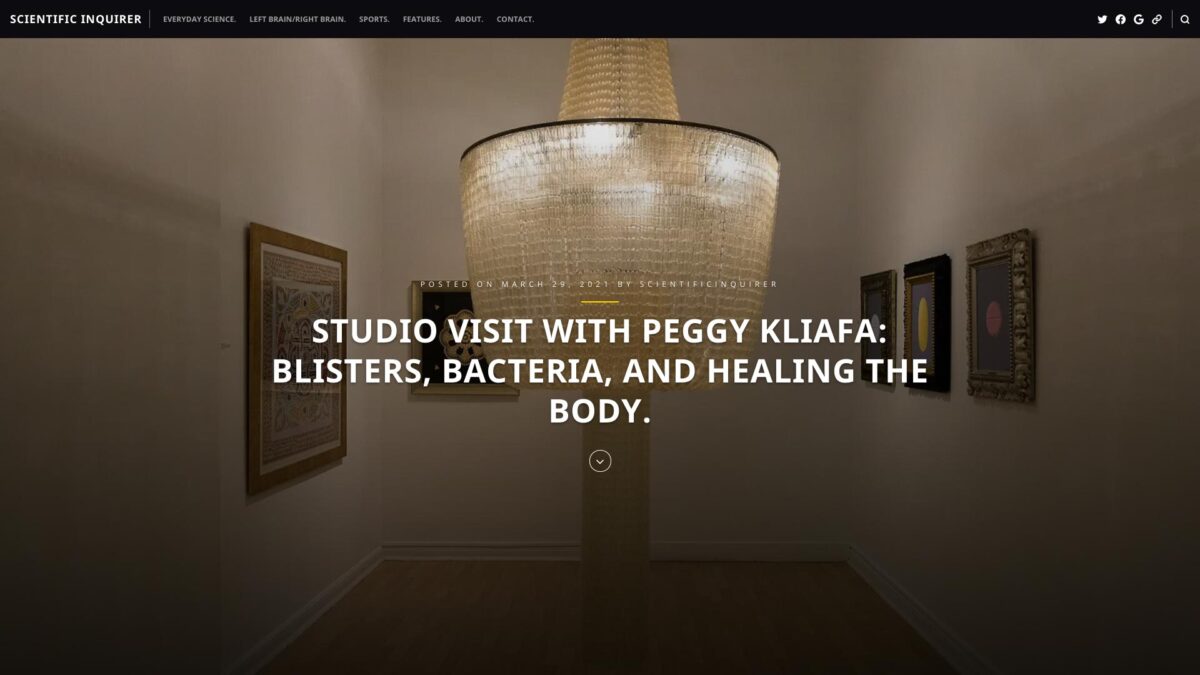SCIENTIFIC INQUIRER
STUDIO VISIT WITH PEGGY KLIAFA:
BLISTERS, BACTERIA, AND HEALING THE BODY.
Read the interview at scientificinquirer.com
Peggy Kliafa is an artist out of Athens, Greece. She incorporates different aspects of health and medicine, playfully referencing everything from religion and spirituality to contemporary artists. The curator of her first solo exhibition, Pharmakon, described Kliafa’s creations in glowing terms.
The body of her work has affinities with Minimal Art, Op Art, and of course Conceptual Art. Her art has a direct, sincere relationship with the minimal, with the common, as well as with geometric forms that are clearly defined with respect to space and viewers’ perception. She achieves the ultimate rationality of form through a systematic, laborious, and time consuming process. In her hands the common becomes powerful, invested with meaning. Peggy’s works throw into relief Adorno’s thought that art acquires meaning, significance, in the absence of function.
Peggy Kliafa took some time to discuss her work with SCINQ.
Can we start with some background?
I am a Greek multimedia visual artist living and working in Athens. My work evokes and alludes to Medicines, treatment and healing of body and soul.
I have graduated from the Athens School of Fine Arts (integrated Masters’ Degree) in the Department of Painting with major in Sculpture in 2011/2012. In the past I had studied Business Administration and had worked as a marketing manager for a few years.
Since my graduation, I have had two solo exhibitions – the first entitled “PHARMAKON” in Kappatos Gallery, Athens and the second entitled “PLACEBO” in Lola Nikolaou Gallery, Thessaloniki –, as well as two 3-person shows – in the Averoff Museum in Metsovo and in Lola Nikolaou gallery-. Meanwhile, I participated in numerous group exhibitions and art fairs in Greece and abroad and my artworks have been acquired by private collections and Museums in Greece as well as collectors and Foundations abroad.
Much of your work comprises things like the painting of pills, children’s medications, and medicinal plants. Where did your interest with medicine (the thing, not the field) come from?
Coming across a pills’ advertisement in a magazine intrigued me and brought out thoughts that had always concerned me. I had a constant dilemma in the past: should I take another pill? Should my children be given antibiotics again? Should medicines be advertised? etc.
The power of medicines seemed fascinating but controversial as well. I always remember the words of Jacques Derrida in his book “Plato’s Pharmacy” (Dissemination): “This pharmakon, this “medicine”, this philter, which acts as both remedy and poison …”
The pill itself is so interesting not only for its obvious or hidden meanings but also for its appearance. The materiality and the variety of colors, shapes and sizes are very inspiring. I use pills as another artist would use color, clay or any traditional art medium. In my mosaics the pills transform into tesserae and color, in my chandeliers the capsules turn into small transparent crystals and in other sculptures the pills and their blisters become the “brick”, the basic key element of my work.
Your series of pill portraits are formalized by how you frame the objects, the painting’s actual frames, and how the everything is presented when hung. What prompted this transition from broad depictions of medicine to actual portraits?
As my research and experience on the subject was advancing, I realized that medicines have a “personality” and a life cycle. They are invented – born, they affect our lives, they often become famous and we read about them every day in newspapers (as it is happening nowadays due to the pandemic), they might at some point disappear because they are replaced by newer ones.
Then, I also noticed, that by knowing what kind of medicines a person takes or denies to take, one can “draw” his/her portrait. Medicines do not only tell the story of an illness or discomfort but also stories of needs and ambitions, of demanding a lot of ourselves or trying to solve problems the quick and the wrong way, of our character and life choices.
These thoughts led me to the idea of presenting the painted pills in an oversize manner in order to personalize them and to emphasize on their importance. The “baroque” style wooden frames I added, as well as the brass plates with their names engraved, completed the notion of traditional portraits hung in a museum.
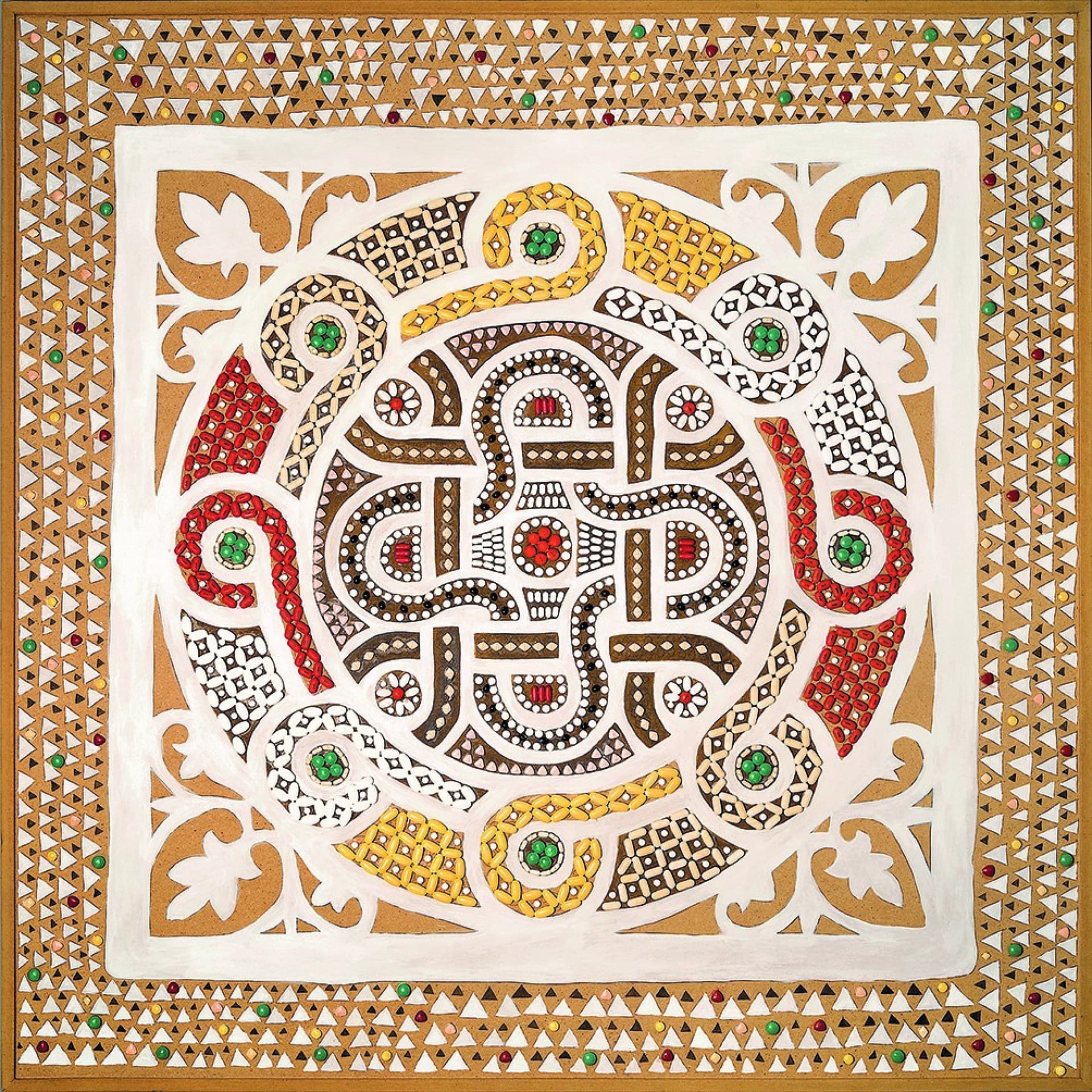
103 x 103 cm (CREDIT Peggy Kliafa)
What are you exploring in the pill portraits? At any point did you hesitate going down that particular path considering how closely painted pills are associated with Damien Hirst?
During my studies, after having experimented with medicines for some time and knowing that Damien Hirst had already done so much work on the subject, I really hesitated. The reason being that Damien Hirst is a contemporary artist – phenomenon still very active; different cases such as Joseph Cornell who had dealt with the theme during modernism or other contemporary artists who have sporadically made few works, would not have made me uncertain.
Then my professors, my better knowledge of art history and the contemporary art production, as well as my unstoppable concern and inspiration on these matters convinced me otherwise and I must say that I did not regret for this decision.
The pills portraits represent now a small part of my work and they resemble to some of Hirst’s works indeed since the objects are the same, but the concept, the medium and the final presentation -as you mentioned yourself earlier- are totally different. As far as the other body of my work is concerned, there are big distinctions in the aspects, the forms, the materials and – very important – the attitude, the worldview.
Your work with pills as a motif takes a less literal and more adventurous turn when you do away with the pill itself and begin to use the negative space created by the pill – the blister – in your work. Can you discuss making this leap and why it appealed to you?
That was indeed an important moment because I was gathering blisters for a long time feeling the “energy” of the empty/negative space, where the pill was gone, was consumed, had already an impact on somebody, but I did not know how to express and visualize my thoughts. Then one day, as I was experimenting with the pills’ transparent blisters and having made a pattern of them, I turned them against the window light. Suddenly it was there! “This is a stained glass window”, I thought and started working on the idea. Slowly the transparent blisters transformed into the stained glass windows of well known European Cathedrals giving me the ability to connect medicines with religion, which I always wanted. The replacement of overpainted glass with empty pills packages – daily objects that are linked to controversial effects on human life – was also accompanied by artificial light in the artworks and installations, which gave a different meaning and feeling to the artworks.
Then at a point I decided to take advantage of the intense materiality and the embossed properties of the aluminum pills’ blisters. The negative space of these blisters, the absence of used pills and the wrinkled sometimes packaging with all its power inspired me very much. Every blister is a small sculpture itself and by combining different blisters together using exactly this negative space, the empty and the full, the light and shadow changes, I could make indefinite combinations and artworks of geometrical abstraction. My research on the work of Mondrian and the philosophical/theosophic aspect of them made them even more interesting. The feeling of intense materiality and repetition, that comes from the big amount of blisters used in these abstract artworks relate them to the notions of overconsumption, recycling/upcycling, to the need of an introspective reflection as well.
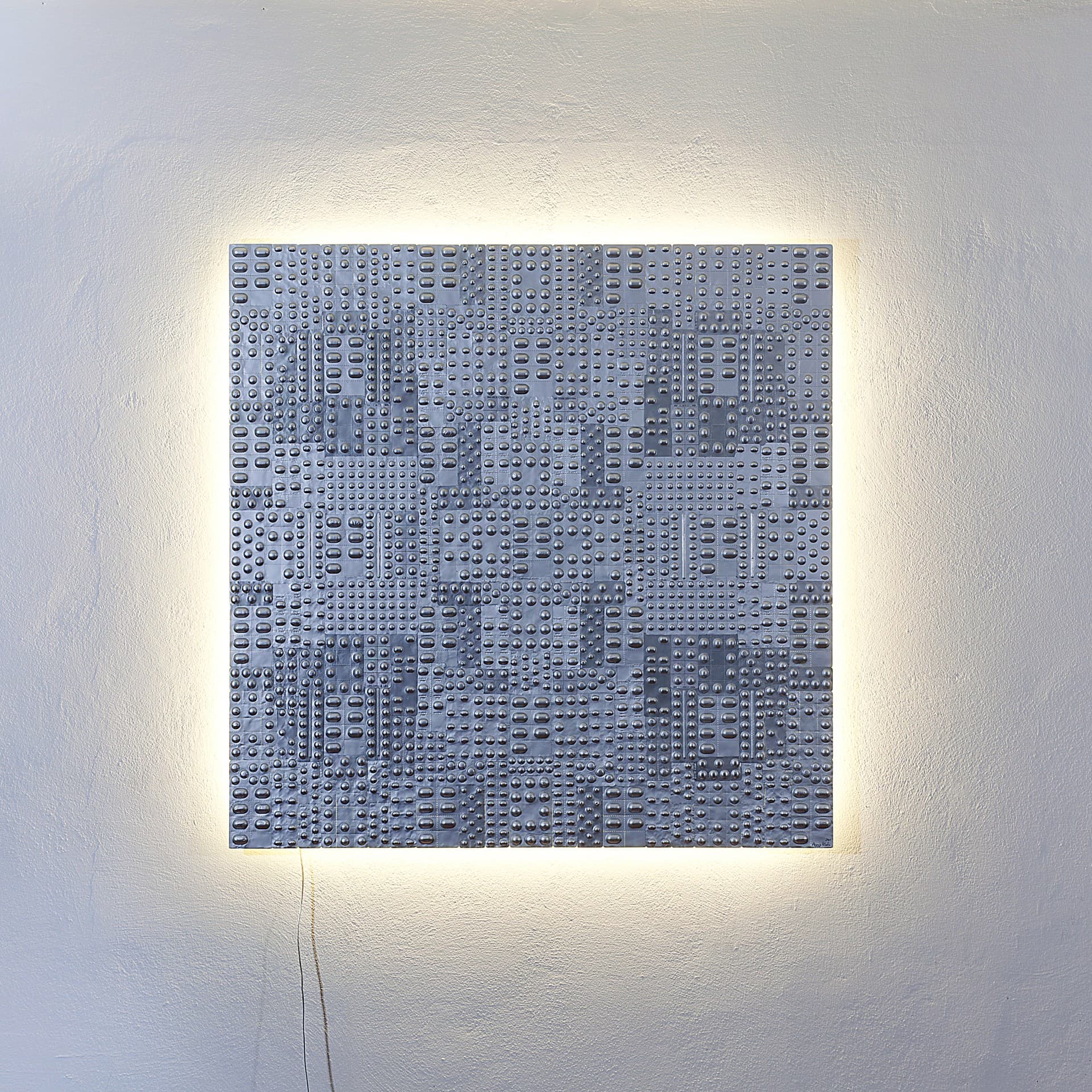
140 x 140 cm. (CREDIT: Peggy Kliafa)
Religion and Science (in the form of medicine) intersect in your work. Both are obviously avenues for healing — spiritual vs corporeal. Can you discuss this aspect of your work?
Religion and Medicine have always been connected not only historically but in various other ways too. In the first societies the Magi of the tribe was both the “priest” and the healer.
During the evolution of societies, through the centuries, Religion and Science have developed their own separate paths, but I feel that in critical moments of despair in our lives we place all our hopes to both of them and that they both have something “magical”. Nowadays, we live such a moment due to the coronavirus pandemic, where the humanity has been praying for the science to discover The Medicine or The Vaccine, which will give us a way out of this incredible situation.
Another link between Religion and Science in the form of medicines -metaphorically- is that in contemporary lifestyles, “Medicines become a Religion” through their overconsumption and our high expectations to solve all our problems easily and quickly with a chemical substance.
Those connections were the inspiration for the creation of several artworks as the Stained Glass Windows, the installations entitled “Remedy or Poison” and “Imagined Homes”, the mosaic with real pills entitled “Omphalio” etc.
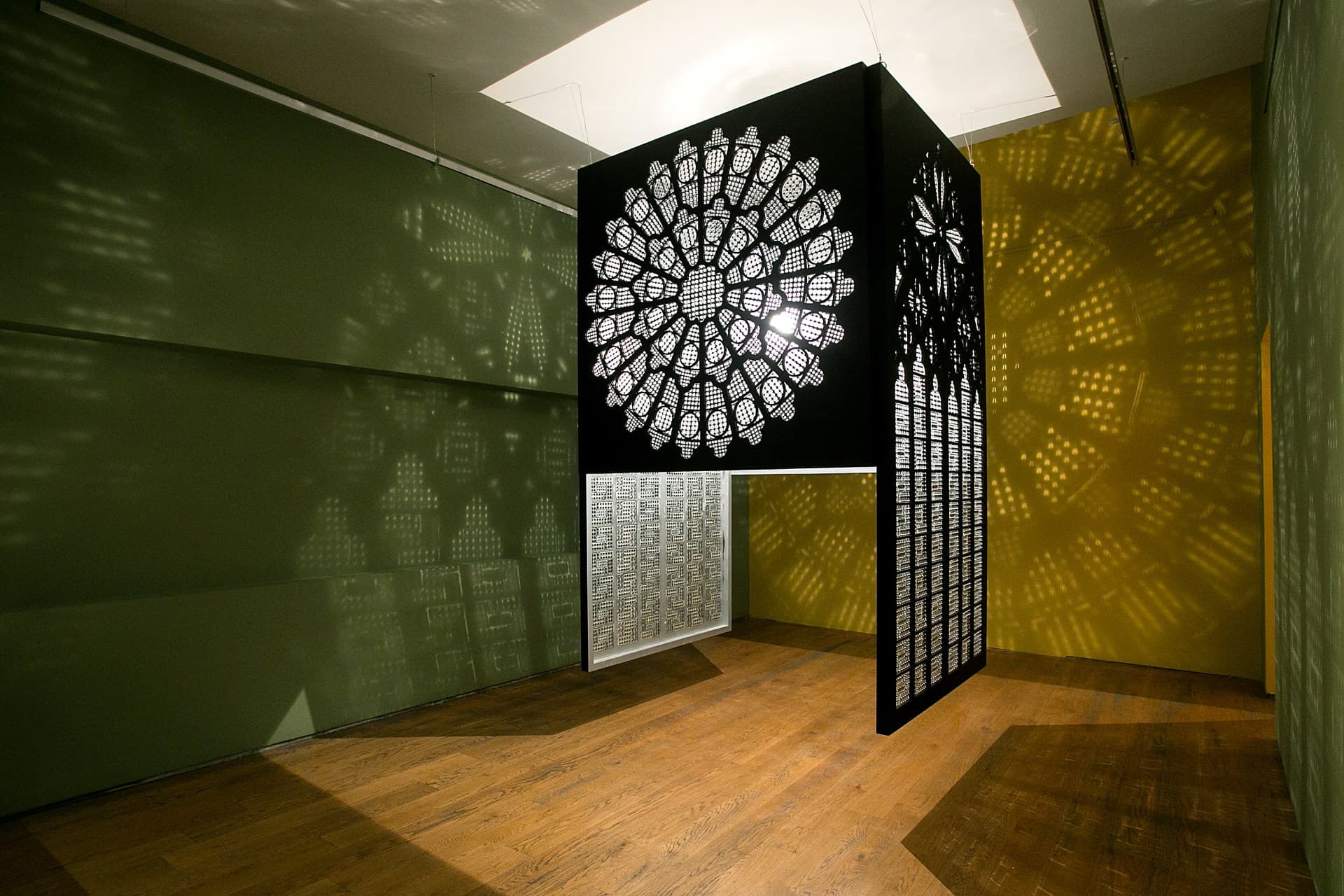
(CREDIT: Peggy Kliafa)
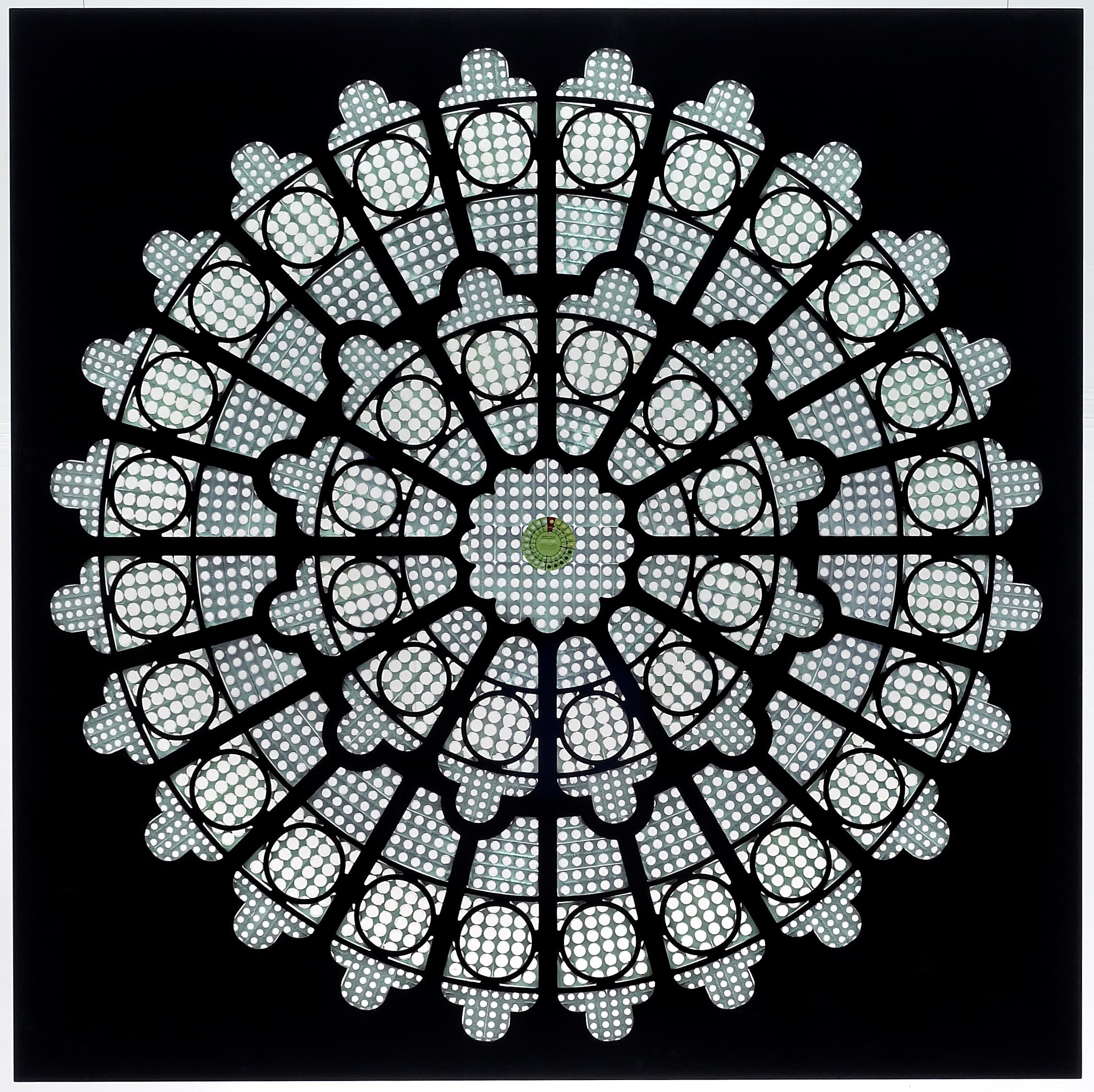
150 x 150 x 5 cm. (CREDIT: Peggy Kliafa)
Your bacteria series is intriguing in that you bring together the causative agent for disease and its cure. There are hits of life and death in it as well, both for the bacteria and for the human. Can you discuss this series?
The artworks’ series under the general title “Bacteria” is based on images of bacteria colonies through the microscope presented in an excessive magnification, in order to emphasize on their importance. The idea is to represent the parallel existence of the problem (bacteria) and its solution (medicines), disease and healing, life and death in extremis.
I use big canvases which I prepare with acrylic spray in a way that the surface looks like an organic environment and then I glue the small aluminum round or oval pieces (forms of bacteria) that we cut from the pills’ blisters in order to remove the pills. These come from the aluminum foil with printed logos or other information about the medicines, which cover the back side of the blisters.
First, I was impressed by the contradiction of the fact that these so “harmful” microorganisms could take so beautiful shapes in nature. Then I recognized that these infinitesimal microorganisms, the not visible to the naked eye, with the impressive shapes, could become of huge importance problems for health and the humanity. When the COVID-19 pandemic started with its various consequences and knowing that viruses are even smaller than bacteria, I realized that the notion of the corona-virus existed already in my work.
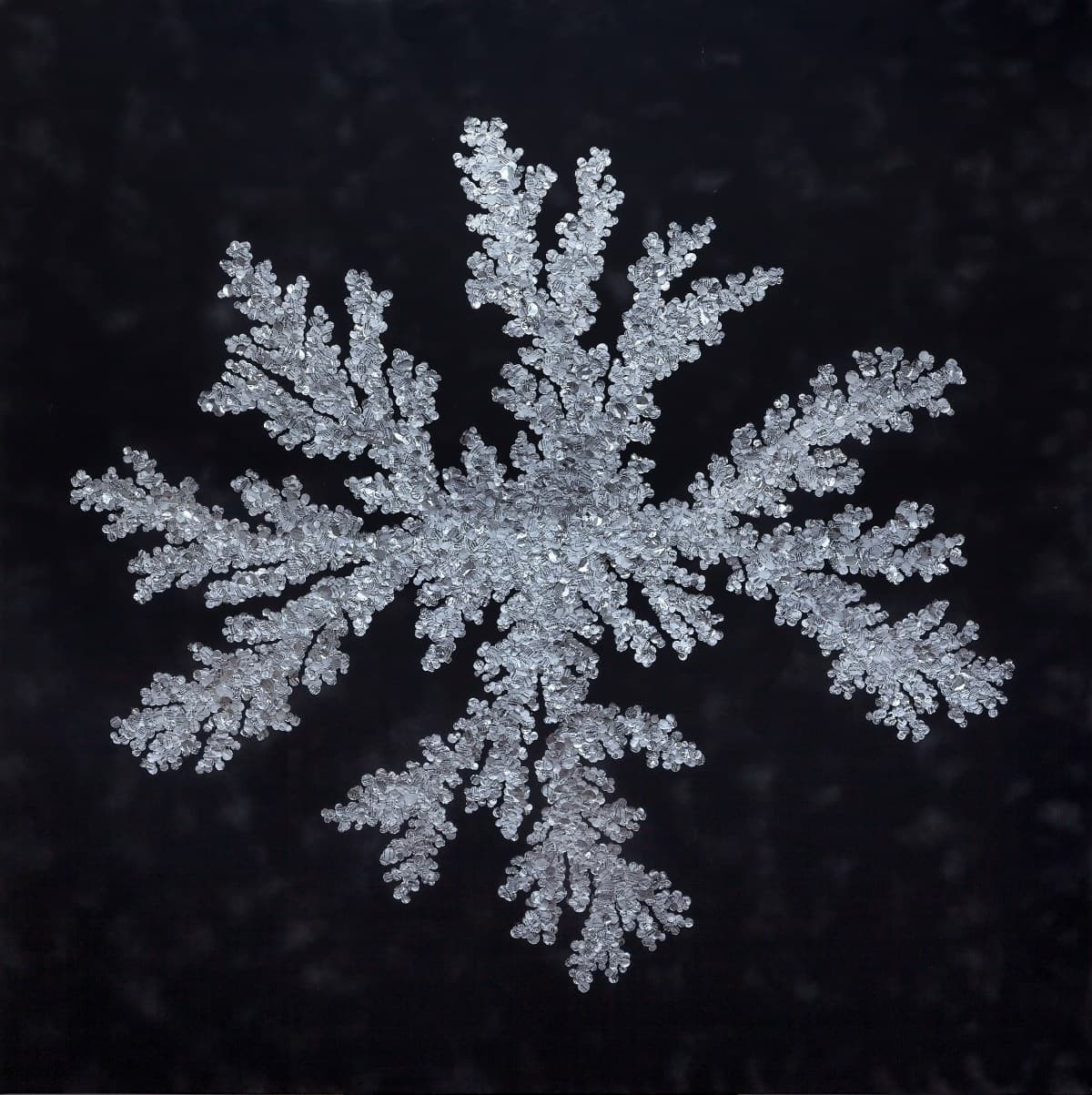
140 x 140 cm. (CREDIT: Peggy Kliafa)
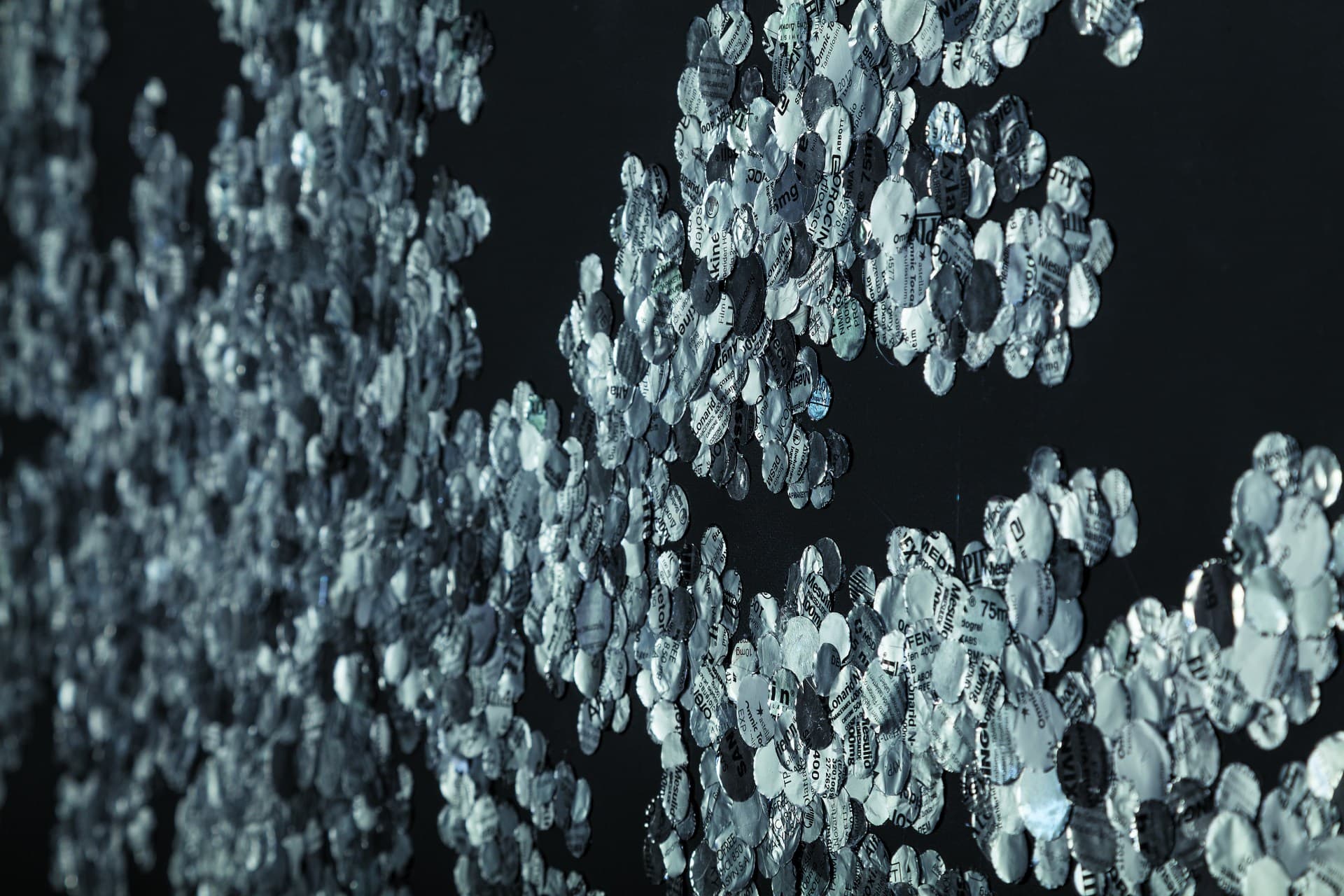
(CREDIT: Peggy Kliafa)
Has the current pandemic influenced how you will approach future works/projects?
The pandemic intensified my previous thoughts and proved that the concept behind several artworks of mine was true. I could mention for example the installation I had presented in July 2017 in EMST (National Museum of Contemporary Art) during Documenta 14, entitled “Breathing Booth & The Cost of Breathing”. It was a utopic proposition to install Breathing Booths in the cities’ centers in order to provide free oxygen and “sell” inhalers and masks from a vending machine/sculpture.
Although the notion of the importance of microorganisms existed already in my work – in the Bacteria Series -, I had not imagined that the world of the microscope could invade and disorganize the “big” real world into such an extent and gravity nowadays. Since this health, economic and social crisis is not yet over though, I feel I need to assimilate and absorb these new experiences. What I know for sure is that I will approach works and projects with even more respect and appreciation of the huge importance of medicines and health issues not only for the individuals, but also in a universal level and for every aspect of life and civilization.
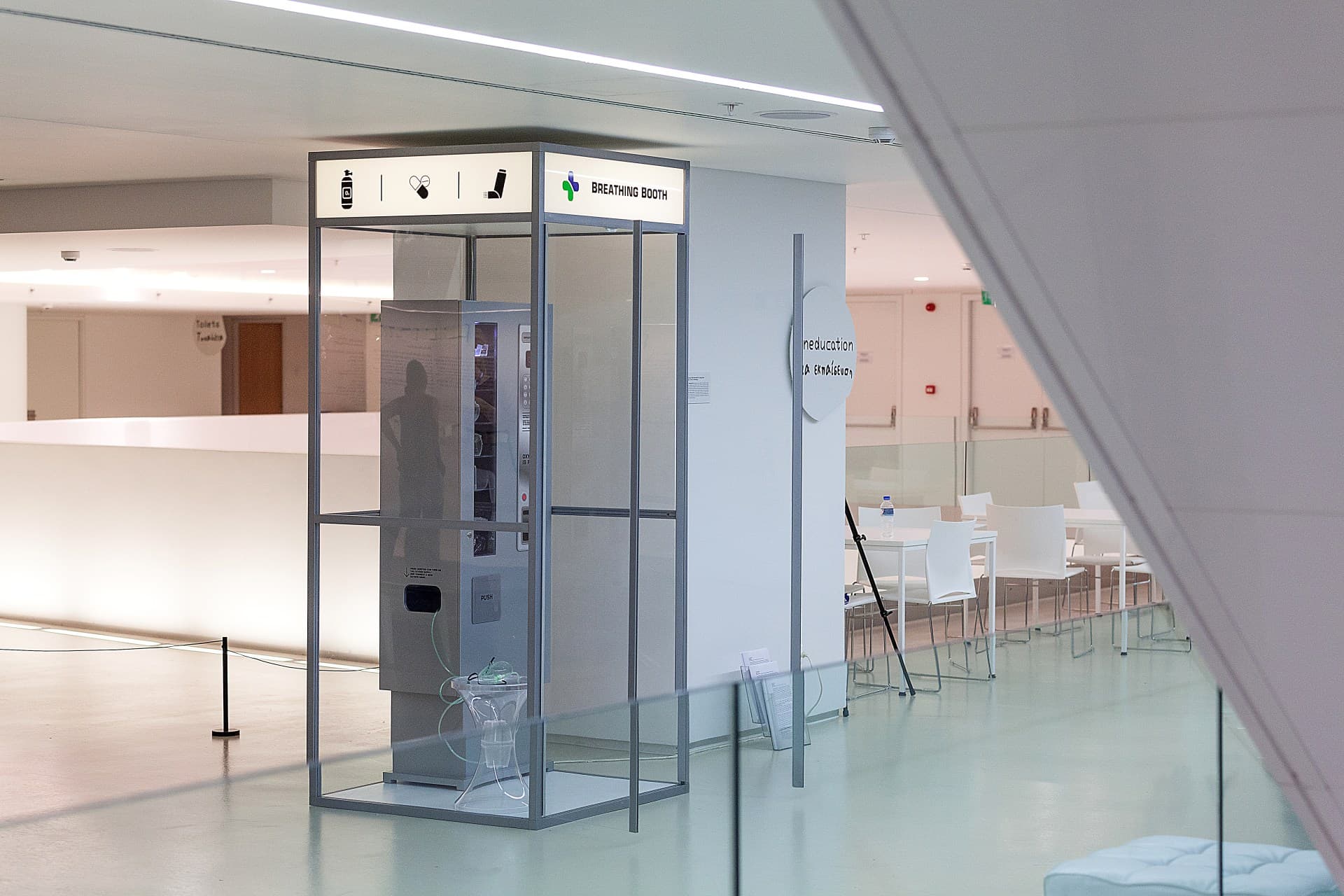
14. 235 x 100 x 100 cm. (CREDIT: Peggy Kliafa)
Finally, what is next for you?
I am currently participating in a very interesting virtual exhibition, which takes place in the City University of New York, Department of Criminal Justice (Anya & Andrew Shiva Gallery) and is entitled “The Right to Silence?”. The exhibition which is curated by Dr. Sozita Goudouna in the context of the new platform Greece in USA will last until summer 2021.
In the summer I will be participating in the very interesting social project-exhibition entitled “Art on Boards; The Skate Project”, which will take place in Zoumboulaki Gallery – Athens, organized by the gallery and The Skateroom for the first time in Greece. It is the Greek edition of the very successful social project, which collaborates with high profile representatives of contemporary art globally, merging the philosophy of skateboarding with art and the support of the endangered youth around the world.
After the lockdowns, I believe that a number of exhibitions that have been postponed due to the pandemic will be realized, as for example a group show on the subject of “Cancer” in Switzerland, another one entitled “Hidden” in Athens, the construction of a big Sculpture of the public space on the subject of recycling marine litter etc. I believe also that I will be able to organize my next solo show in Athens.
The situation in which we have been living for the past one year prevents us from being able to schedule with precision our next steps and urges us to be creative and flexible. Never again has our generation experienced such a global crisis or linked its future more with the need for the invention of Medicines and Vaccines which could allow the return to “normal” and change the course of history!
